Synthesis and Characterization of Layered Nb2C MXene/ZnS Nanocomposites Based on Highly Selective Dopamine Electrochemical Sensing
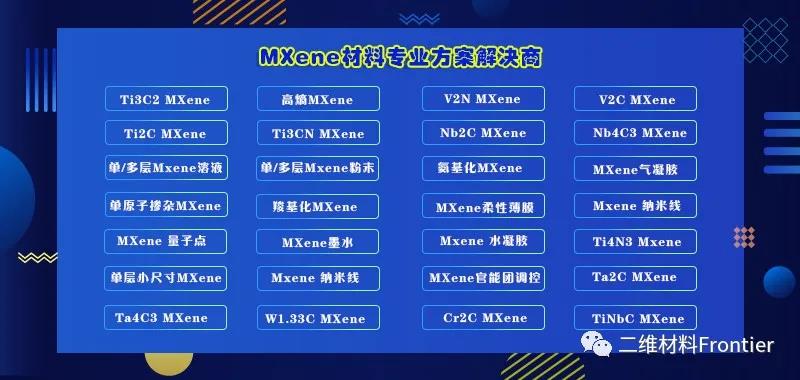
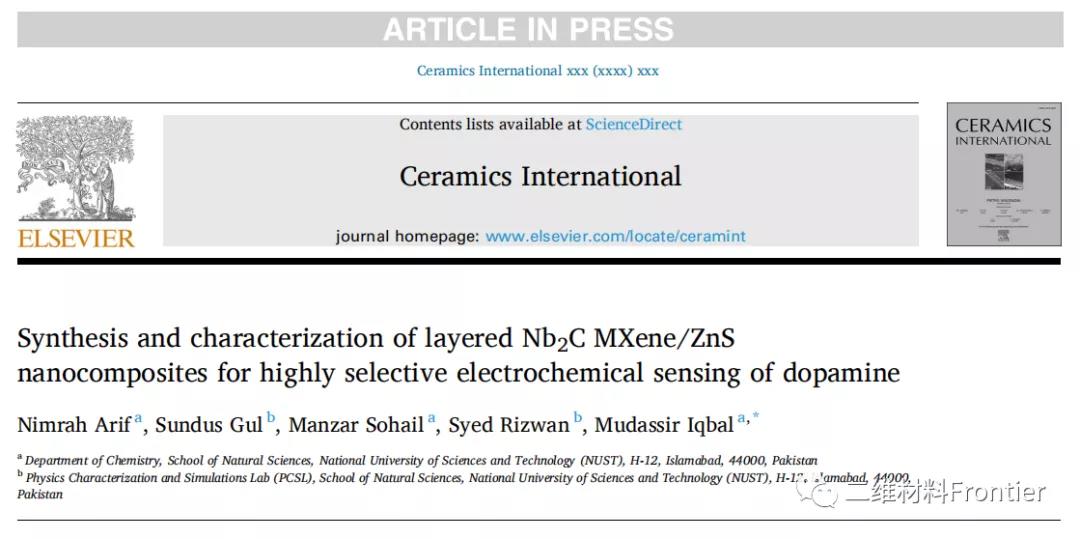
1. Article overview
Because of its special properties, MXenes is marked as a future material in the field of two-dimensional (2D) materials. Niobium carbide (Nb2C) is an important member of the MXene family and has a wide range of applications in the field of lithium-ion batteries and supercapacitors. However, its application in the field of sensing has not yet been explored. This article first reported the synthesis and application of Nb2C/ZnS nanocomposites for dopamine (DA) sensing. At 55◦C, the Nb2C of the matrix MAX phase (Nb2AlC) was etched. Differential pulse voltammetry (DPV) was used to apply the Nb2C electrode to the electrochemical sensing of DA. Zinc sulfide (zinc sulfide) nanoparticles were synthesized by hydrothermal method to improve the electrochemical performance of Nb2C. The prepared samples were characterized by XRD, SEM, EDS and FTIR spectroscopy techniques. MXene-ZnS nanocomposite modified glassy carbon electrode (GCE) proved to be a very effective electrochemical electrode material, with a detection range of 0.09-0.82mM, a very low detection limit of 1.39μM, and a sensitivity of 12.1μA·μM- 1. In the presence of interfering agents such as ascorbic acid, citric acid and glucose, the modified glassy carbon electrode has also been proven to have special selectivity for dopamine.
Two, graphic guide
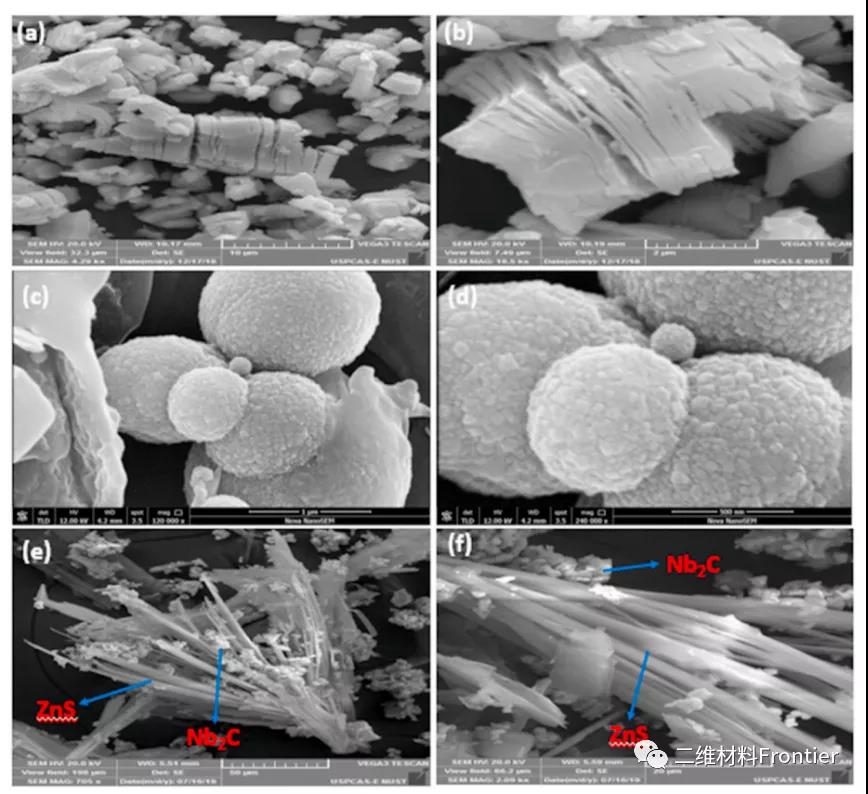
Two, graphic guide
Figure 1. (a, b) SEM results of Nb2C at 10 μm and 2 μm, (c, d) SEM images of zinc sulfide agglomeration at 1 μm and 500 nm, (e, f) SEM images of Nb2C/ZnS nanocomposites .
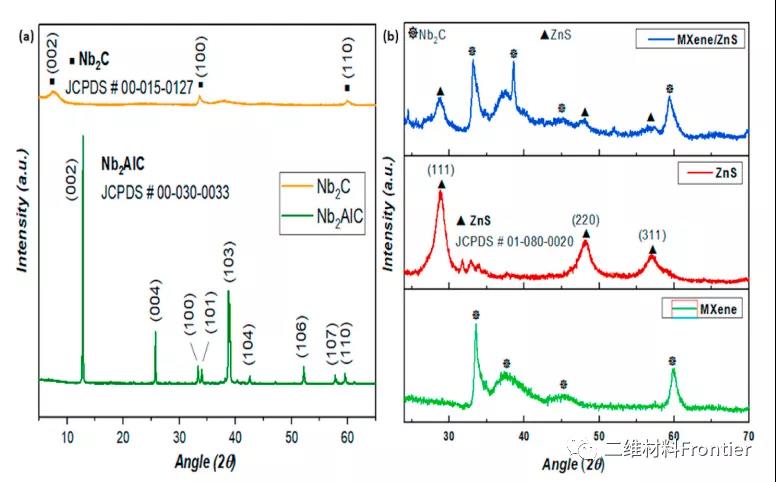
Figure 2. (a) XRD pattern of MXene compared with MAX, (b) XRD of MXene-ZnS nanocomposite and reactant parallel.
(a) The Nb2C sample matches with JCPDS#00-015-0127 and has P63/mmc hexagonal symmetry. At 38.9◦, the characteristic peak of MAX phase is almost completely removed. The downward shift of the MAX phase 002 peak corresponds to the increase of the lattice parameter c of the MXene sheet. (b) is the XRD pattern of the synthesized zinc sulfide sample, and the result obtained matches the cubic zinc sulfide structure with the lattice parameter of JCPDS#01-080-0020.
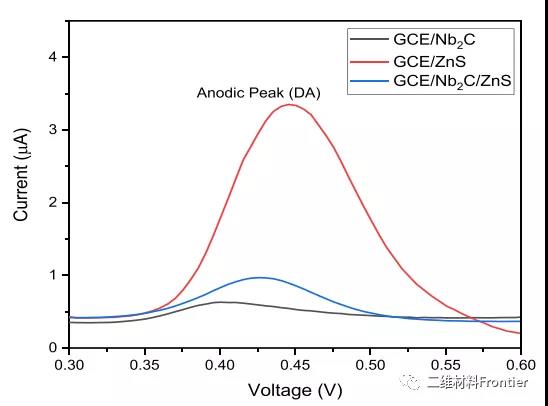
Figure 3. Dopamine detection peaks of different GCE electrodes in DPV containing 0.1MPBS.
In 0.1M phosphate buffered saline (PBS) (pH=3), the DA was detected electrochemically on different modified GCE electrodes by DPV at a scan rate of 50mv-1. GCE was modified by using three samples. Nb2C MXene, zinc sulfide and Nb2C /ZnS nanocomposite materials. The potential window selected for this purpose is 0.3 to 0.6V, and the maximum peak current is 0.40V to 0.435V.
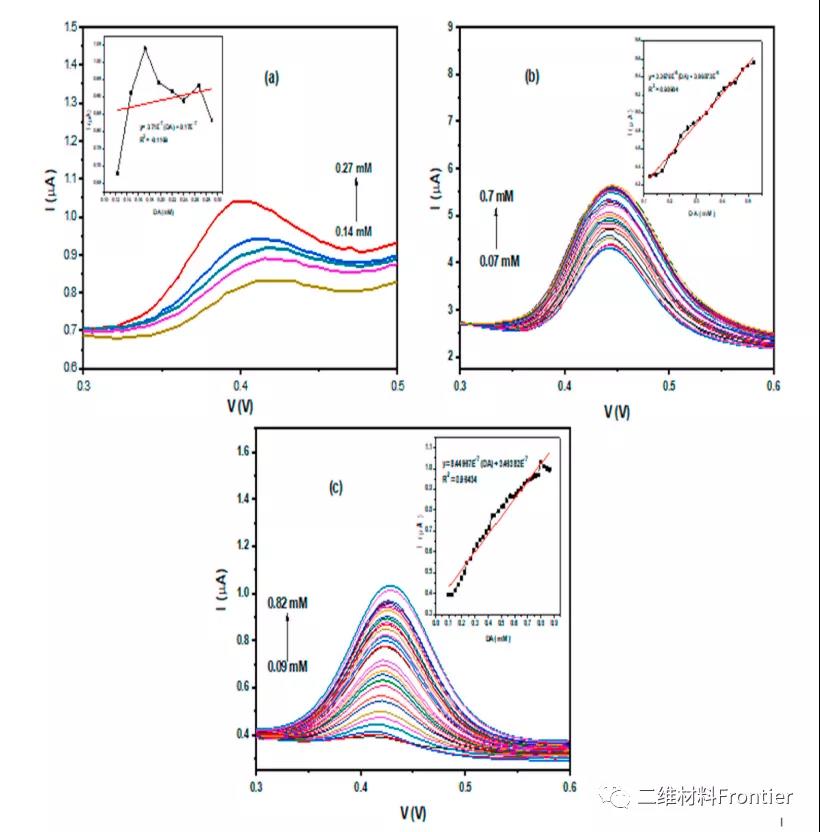
Figure 4. DPV voltammograms of (a) GCE/Nb2C, (b) GCE/ZnS and (c) GCE/nb2C/ZnS. Inserted is the linear graph of the current and DA concentration of the corresponding electrode (PBSpH3, scan rate Scat50mVs∓1, step potential 5mV, step potential 5mV), with an interval of 0.5s).
3. Full text summary
Through extensive analysis of current research work, the article concludes that Nb2C has multiple functions on the surface. At 55◦C, Al was etched with Nb2AlC, and O, OH and F were successfully synthesized. By reacting zinc acetate with sodium oleate in hot water, spherical aggregates of zinc sulfide nanoparticles with a diameter of about 9 nm were prepared. The resulting compound and its 1:1 complex are the first to detect dopamine through DPV electrochemistry. Glassy carbon electrode (working electrode), pH3 and PBS at a scan rate of 50mv-1 are the best conditions for the experiment. The electrodes made of MXene-ZnS nanocomposite are the best three electrodes, with the widest linear detection range of 0.09-0.82mM, the lowest detection limit of 1.39μM, and the highest sensitivity of 12.1μA/μM. The prepared electrode proved to be highly sensitive and selective to dopamine because it did not detect any interfering agents (ascorbic acid, citric acid and glucose) accompanying dopamine. The electrochemical activity of GCE/Nb2C/ZnS supports our purpose of manufacturing the composite material, and opens a new door for the further synthesis of different types of McKene composite materials for better practical applications.
This information is sourced from the Internet for academic exchanges. If there is any infringement, please contact us to delete it immediately
18915694570
Previous: ACS NANO: Fixation of


